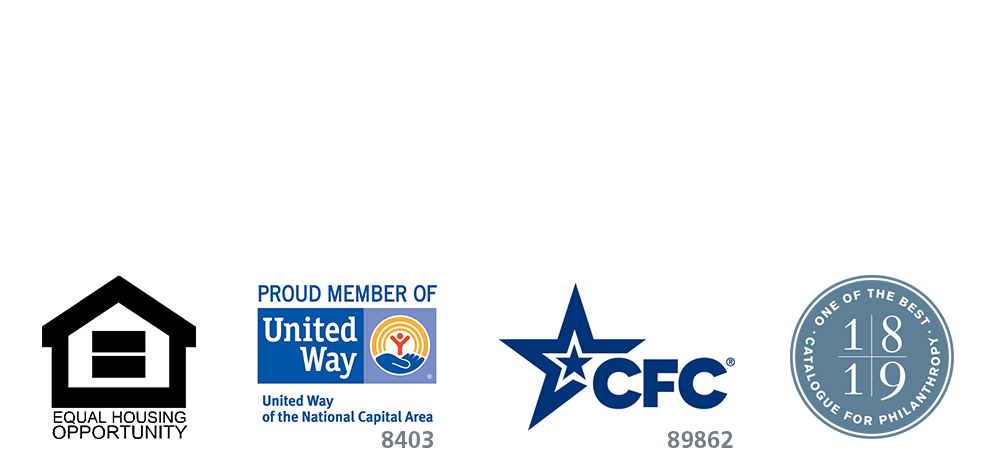The Road to APAH
First in a series celebrating the achievements and growth of APAH
For both Nina and Carmen, their professional journeys to affordable housing, real estate development, and APAH took more than a few twists and turns. Nina’s father was a structural engineer. As a child she marveled at the bridges and dams he worked on and the idea that someone could sit at a desk and do drawings that would result in these big projects. Nina entered Harvard College expecting to study engineering but graduated with a liberal arts degree. She took a summer job as a writer for Let’s Go USA. Boarding a Greyhound bus from Boston, she travelled across the country, writing, and staying at youth hostels along the way.
“When I got to San Francisco, there was an ad for a job at the local youth hostel office. They were in this incredible growth mode because the federal government had passed some historic preservation laws that required public agencies to preserve properties when they acquired land. The Executive Director of the regional American Youth Hostels office in San Francisco saw the opportunity and madly went around the Bay Area getting projects approved to become youth hostels, from Civil War barracks to lighthouses.
“I was 21, and fresh out of college, so when he asked me to sit down and organize the papers in the office—that were covered with sawdust and spilled food—I thought: ‘Yes, I’ll work here for a little while and eventually I’ll get another job’. As my father would say, ‘a real job’.
“I was quickly promoted to run the operations and then became acting Executive Director. Suddenly I was negotiating with architects and general contractors, working with public agency officials, and doing financing and fundraising. It was an immersion in on-the-job training. I became hooked on real estate.”
Nina was recruited at 25 to head the real estate division of the national hostelling organization, which brought her to Washington, DC. Again, she came into a smaller organization and helped create the national hostel network, building new hostels in key cities around the country, including DC, New York, Los Angeles, Chicago and Seattle.
Carmen was clear from the start what she wanted to do—she was going to be a diplomat. Her parents had immigrated from Latin America to Queens, New York in pursuit of the American dream. Carmen’s dream, quite logically, took her to Georgetown’s School of Foreign Service where she focused on Latin American Studies. “I really thought my calling was to be a bit of a bridge, one that would go back the other way and foster connections from here back to Latin America.”
But her work running a student organization with a million dollar budget, sparked her interest in business. Needing stronger technical skills, she did a management training program at NationsBank, now a part of Bank of America, with duties ranging from commercial lending to managing a local branch. Eager to learn more, she went on to get her MBA in Finance at the Wharton School and returned to DC hoping to work for DC’s reigning Fortune 500 business, Marriott International. It was there, as part of a small financial planning and analysis team that she learned strategy, pro forma analysis, and forecasting—skills she used years later to guide the APAH pipeline.
Always the diplomat, Carmen’s talent and gift for relationships opened the door for another career shift. She followed her Marriott boss to a new opportunity at Clark Construction. “That’s where I really became a developer,” recalls Carmen, “I learned how to pick architects, how to choose a general contractor, how to write a proposal. We did PPEAs there (public private partnerships to develop public land), which later became a part of APAH’s business development tools. I learned how to do hard negotiations and how to do agreements. And I learned the ‘Arlington Way’.”
One of Carmen’s projects was competing for and winning the Arlington Mill PPEA for Clark to develop a mixed income project along Columbia Pike. “Suddenly, I was learning about urban planning and affordable housing and getting to know community groups like the Columbia Pike Revitalization Organization (CPRO). It was during that time that I first heard Nina speaking at a conference about APAH’s work in the Arlington community and I thought ‘wow, how great would that be to just go deeper in this community where I live, where I loved the County staff, and loved working with the Pike community? I didn’t even know nonprofits did real estate development. I was intrigued.”
That thought stayed in the back of Carmen’s mind for more than two years. Her job at Clark radically changed. “The company had gotten out of the mixed income business after the housing crisis and the tax credit market had gone upside down. Clark really wanted to focus on big infrastructure projects—building campuses and airports and roads. But I had fallen in love with mixed income and affordable housing in Arlington.”
Once again, Carmen pulled out her diplomacy skills, working her network to get an introduction to Nina. “Maybe I can volunteer, or be on the Board, or do something,” she remembers. The day she walked in the door to meet Nina, APAH had just been awarded the Arlington Mill project—the very project that Carmen had worked on at Clark but had dropped in the recession. It was kismet. ”I thought, this is perfect, the most important project I’ve ever worked on, a project I loved but had died, this is the person who is going to get the job done. I thought it was a really great sign. I wrote a proposal. And the rest is history.”

